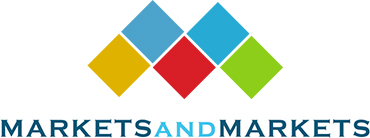Multiplex Assays Market worth 3.76 Billion USD by 2021
According to a new market research report “Multiplex Assays Market Product (Consumable (Kits & Reagents, Panels), Type 9nucleic Acid-Based, Protein-Based), Technology (PCR, Planar Array), Application (R&D, Companion Diagnostics), End User (Hospital, Clinical Laboratory) - Global Forecast to 2021" published by MarketsandMarkets, The Multiplex Assays Market is projected to reach USD 3.76 Billion by 2021 from USD 2.66 Billion in 2016, growing at a CAGR of 7.2% during the forecast period (2016–2021).
The Multiplex Assays Market report provides a detailed overview of the major drivers, restraints, challenges, opportunities, current market trends, and strategies impacting the Multiplex Assays Market along with the estimates and forecasts of the revenue.
The adoption of companion diagnostics for increasing safety & efficacy of therapies, need for effective analytical platforms in research to reduce operational costs, advantages of multiplexing over traditional assays are the major drivers for the Multiplex Assays Market . Increasing validation of biomarkers in molecular and protein diagnostics are expected to further drive the growth of the Multiplex Assays Market. However, high cost of multiplex assay instruments will restrain the growth of this market.
The Multiplex Assays Market is broadly segmented into products & services, type, technology, applications, end users and regions. The products & services segment is further segmented into consumables, instruments, accessories, and software and services. The consumables sub segment is expected to account for the largest share of the products & services segment in 2016, owing to increasing demand for consumables.
Speak to our research experts:
http://www.marketsandmarkets.com/speaktoanalyst.asp?id=61593314
On the basis of type, the Multiplex Assays Market is categorized into nucleic acid-based assays and protein-based assays. Nucleic acid-based assays segment is further classified into planar nucleic acid assays and bead-based nucleic acid assays.. Protein-based assays segment is further categorized into planar protein assays and bead-based protein assays. The protein based assays segment is expected to be the fastest growing segment of the Multiplex Assays Market in during the forecast period due to adoption of these assays in research purpose.
Factors such as need for effective analytical platforms in research to reduce operational costs are driving the growth of this segment.
The technology segment of the Multiplex Assays Market is categorized into multiplex polymerase chain reaction, multiplex arrays, and other technologies. The multiplex arrays segment is further divided into planar arrays and bead-based arrays. The multiplex arrays segment is expected to account for the largest share of the Multiplex Assays Market in 2016. The advantages of multiplexing over traditional assays need for effective analytical platforms in research to reduce operational costs, and adoption of companion diagnostics for increasing safety & efficacy of therapy by multiplex assays are driving the growth of this segment.
The applications segment of the Multiplex Assays Market is categorized into research & development, diseases & disorders, companion diagnostics, and other applications. The research & development segment is expected to account for the largest share of the Multiplex Assays Market in 2016. Factors such as convenience in performing the assays and faster results offered by multiplex assays are driving the growth of this segment.
On the basis of end user, the Multiplex Assays Market is segmented into academic and research institutes, hospitals, clinical laboratories, pharmaceutical and biotechnology companies, and other end users. The pharmaceutical and biotechnology companies segment is estimated to account for the largest share in 2016 due to increased adoption of multiplex assays in this segment.
Major players in the Multiplex Assays Market include Luminex Corporation (U.S.), Thermo Fisher Scientific, Inc. (U.S.), Illumina, Inc. (U.S.), Bio-Rad Laboratories, Inc. (U.S.), and QIAGEN N.V. (Netherlands).





